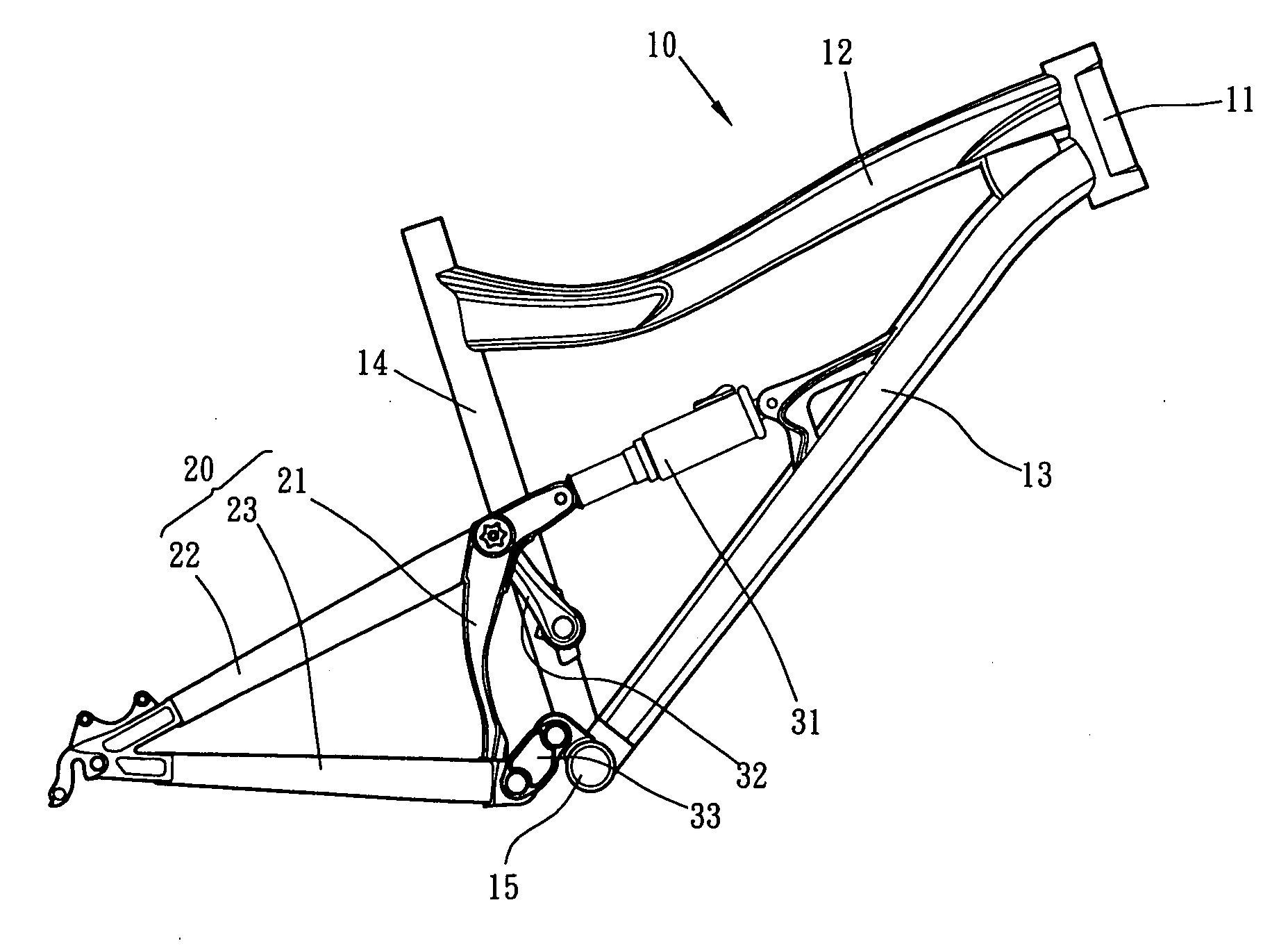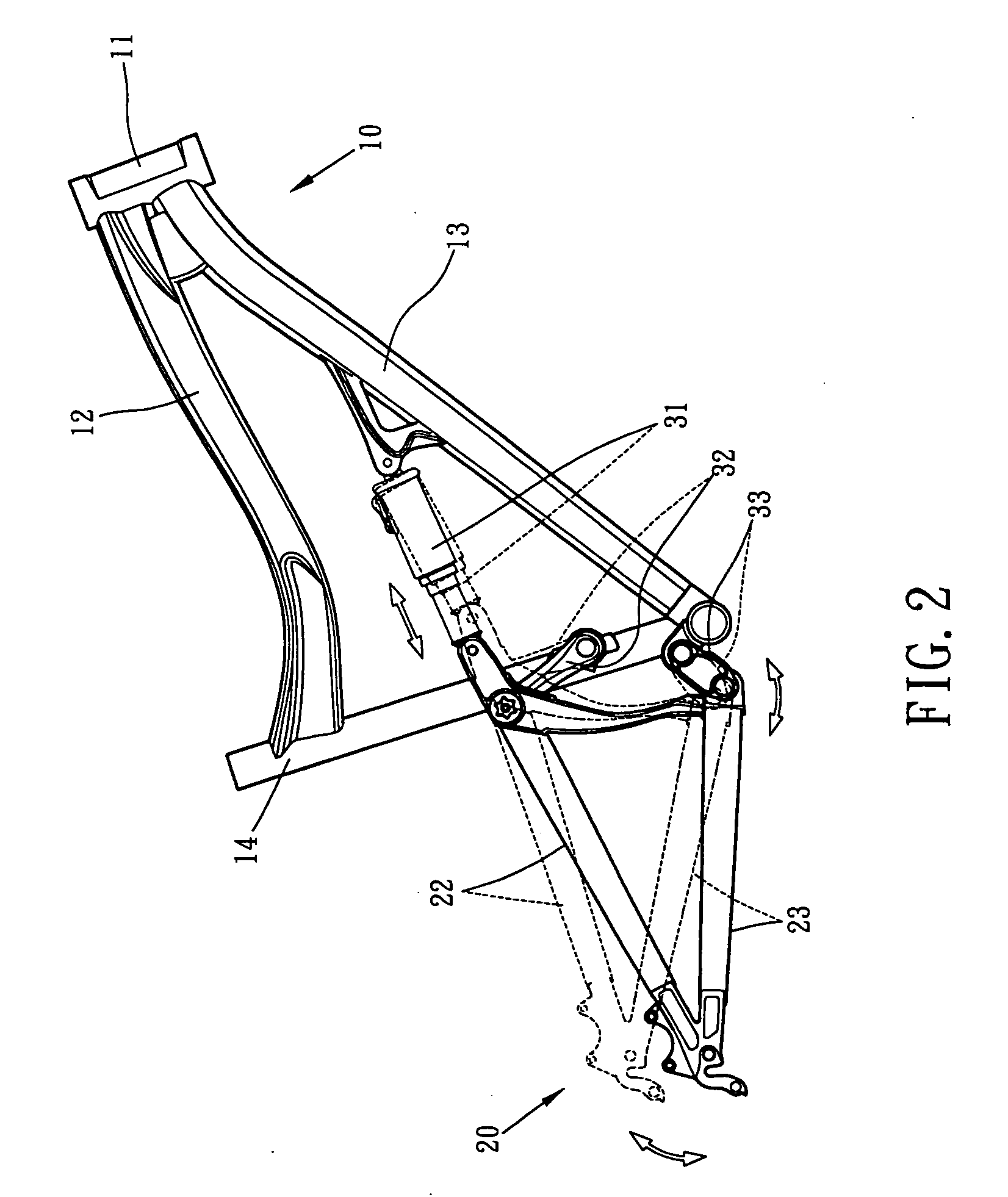Bicycle suspension system employing highly predictable pedalling characteristics
a technology of bicycle suspension and pedalling characteristics, which is applied in the direction of friction roller based transmission, steering device, cycle equipment, etc., can solve the problems of high dcsl value, unpredictable response of rider, and highly predictable response, and achieve the effect of improving anti-squat characteristics
- Summary
- Abstract
- Description
- Claims
- Application Information
AI Technical Summary
Benefits of technology
Problems solved by technology
Method used
Image
Examples
Embodiment Construction
[0016]FIG. 1 and FIG. 2 depicts a preferred embodiment of a rear wheel suspension system of a bicycle of the present invention. The bicycle main frame 10 generally includes a seat tube 14 and a down tube 13 both of which are attached to a bottom bracket 15 that houses a pedal assembly, a top tube 12, together with the down tube 13 attached to the head tube 11, and a front fork (not shown). There is a first location above the bottom bracket pivot axis and proximate the bicycle chain drive force line for the pivotal connection to the first linkage member 33 of the rear wheel suspension system, and a second location above the first location for the pivotal connection to the second linkage member 32. Additionally, there is a connection on the down tube 13 for the forward connection of the shock absorber 31. These elements are typically welded or otherwise secured together to define the main frame 10 of the bicycle. Although the main frame 10 typically includes all of the foregoing membe...
PUM
 Login to View More
Login to View More Abstract
Description
Claims
Application Information
 Login to View More
Login to View More - R&D
- Intellectual Property
- Life Sciences
- Materials
- Tech Scout
- Unparalleled Data Quality
- Higher Quality Content
- 60% Fewer Hallucinations
Browse by: Latest US Patents, China's latest patents, Technical Efficacy Thesaurus, Application Domain, Technology Topic, Popular Technical Reports.
© 2025 PatSnap. All rights reserved.Legal|Privacy policy|Modern Slavery Act Transparency Statement|Sitemap|About US| Contact US: help@patsnap.com



